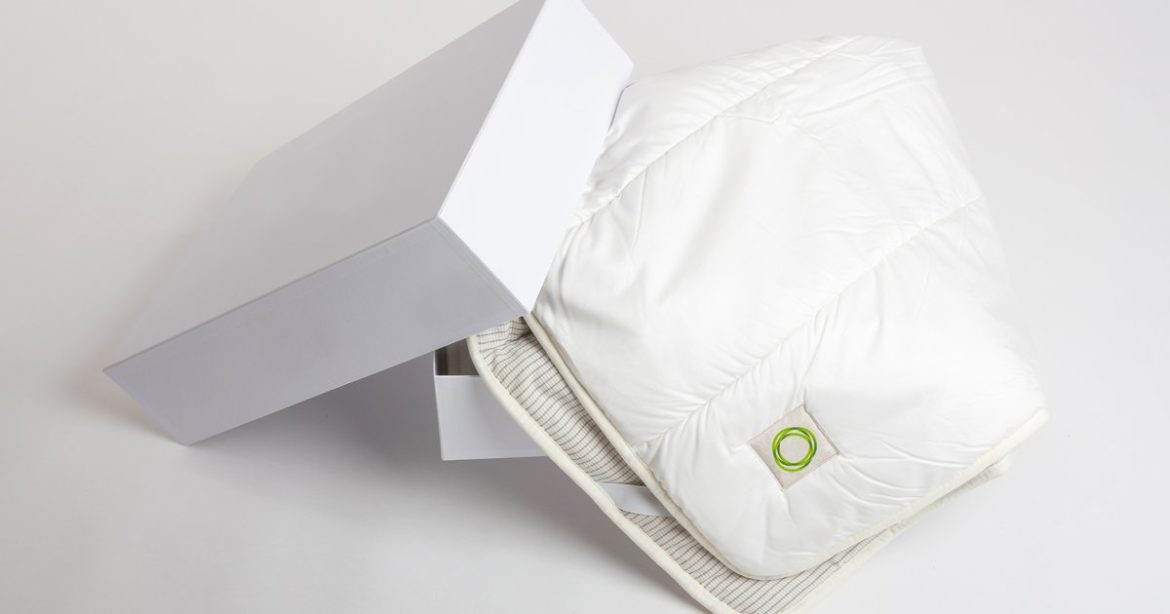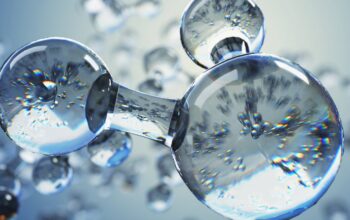
Alessandro Lorusso Rossi, PhD
About the author:
Keywords: siliconised cotton fibres, textile materials and fibres, cotton fibre, ‘IFIBR’ fabric, nanofibres, nanotechnology.
Abstract; Siliconised cotton fibres are nowadays one of the most widespread and demanded types of textile fibres. The article deals with innovative developments of the manufacturer of such fibres – ‘Ipoh GmbH’ company, Austria, which allow solving many medical and health-improving problems of neurological and psycho-physiological character.
Chronic lumbar pain is a common problem faced by a significant number of people around the world. It is defined as discomfort or pain in the lumbar region persisting for more than 12 weeks. This discomfort can be associated with a variety of factors including physical, emotional and social aspects.
Types of chronic lumbar pain
There are several types of chronic lumbar pain. They can be categorised into:
1. Mechanical – arising from strain and stress on the spine.
2. Neurological – when the pain is accompanied by radiation to the legs, provided by nerve compression.
3. Referred – occurring due to diseases of internal organs.
4. Psychogenic – associated with stress and emotional disorders.
Diagnosis of chronic lumbar pain.
Diagnosis of chronic lumbar pain requires a careful approach. The doctor bases his or her assessment on the patient’s medical history, includes physical examinations, and may include additional tests. These may include x-rays, MRI or blood tests to rule out systemic disease.
Role of neuropsychiatric status.
Studies show that the patient’s neuropsychiatric status plays an important role in the development and severity of chronic lumbar pain. Stress and depression can increase the perception of pain, making it more severe.
Occupational factors.
Certain occupations can also increase the risk of chronic lumbar pain. Jobs involving physical labour, prolonged sitting or poor posture can contribute to the development of this problem.
History of diagnosis and treatment.
Approaches to the diagnosis and treatment of chronic lumbar pain have changed over time. Previously the emphasis was on surgical interventions, but with the development of physiotherapy and rehabilitation, the emphasis has shifted to more conservative treatments.
Current views on prevention and treatment.
Modern approaches to the prevention and treatment of chronic lumbar pain include comprehensive programmes that may combine physical activity, lifestyle modification, psychological support and medication. An important role is played by the correct organisation of the working and sleeping place.
The main approaches to treatment.
Various methods can be distinguished here: from drug therapy to physiotherapy procedures and manual therapy. Recently, methods aimed at improving the patient’s quality of life and eliminating factors contributing to pain have come to the forefront.
In this article we will try to investigate just such methods and equipment aimed not only at therapeutic effects, but also at early prevention of chronic lumbar pain.
The impact of bed organisation on quality of life and reducing the risk of chronic lumbar pain.
Bed organisation is of key importance in maintaining back health. For example, improper sleeping posture can exacerbate conditions associated with chronic lumbar pain.
Orthopaedic sleeping position.
An orthopedic sleeper, as a method of relief for chronic lumbar pain, promotes proper positioning of the spine during sleep. It reduces pressure on the affected areas, bringing the patient closer to freedom from pain and discomfort.
Influence of material composition on the physiological state of a person.
The use of quality textile materials for the sleeping bed also affects the physiological state of a person. Modern technologies make it possible to produce materials that effectively support the body, provide an optimal microclimate and promote good sleep.
Innovative materials and technologies.
In this context, the IFIBR mattress cover is a revolutionary product created using siliconised fibres and cotton combined with natural minerals. The textile fabric developed by Ipoh GmbH from Austria is an outstanding example of the synergy between modern technology and traditional materials.
These textile innovations help to achieve complete muscle relaxation, improve blood circulation and support the correct positioning of the spine, which greatly helps to alleviate the symptoms of chronic lumbar pain and regain the ability to move freely without pain.
In some cases, the right choice of mattress pad or mattress is enough to see noticeable improvements in health. Today, with all of the above factors in mind, the IFIBR mattress cover opens new horizons in the treatment and prevention of chronic lumbar pain, providing comfort and support to every user.
Innovative developments in the production of polyester fibres for textile materials.
In today’s world, siliconised cotton fibre has become one of the most popular and sought after types of nanotechnological fibres. This article is devoted to innovative developments of the leading world manufacturer of such fibres – the company ‘Ipoh GmbH’, Austria, which help to solve a variety of problems arising during the processing of garments. The peculiarities of production and properties of modern siliconised cotton fibres such as ‘IFIBR’ are considered.
Knowledge of the characteristics of materials allows to provide high quality of manufactured products, reduce labour costs and economical use of materials – which is a key task that contributes to the competitiveness of light industry products. Modern nanofibres and yarns have practically reached the level of natural materials in terms of hygiene and comfort. At the same time, the main advantages of such textiles – elasticity, hypoallergenicity, practicality, durability and resistance to high temperatures and aggressive substances – remain unchanged. In addition, it is possible to give these fibres new qualities, which opens up new areas for their application.
Today, siliconised cotton fibres are the leading nanotechnological fibres. Since the early 2000s there has been an active growth in the production of combined nanofibres, which is explained by their versatility and outstanding physical and mechanical properties. The almost invariability of these properties in the wet state, high temperature resistance and bio-resistance make such fibres preferable to other materials.
Siliconised cotton yarns, especially textured ones, in combination with a whole group of natural minerals, are widely used for the production of various fabrics.
The manufacturer is constantly working to improve the characteristics of the fibre and fabrics made of it, creating materials with improved performance, safe for the environment. Products made of siliconised fibre are pleasant to the touch, quick-drying, easy to clean from dirt, do not wrinkle, resistant to fading and have high density.
The textile manufacturer, Ipoh GmbH, has committed itself to following the requirements set by the highest standards for such fibres. Siliconised cotton fibre can be manufactured in various forms such as complex yarns with various additives or monofilaments.
Cotton fibre serves as a versatile basis for the creation of a multitude of products required by human beings.
Ipoh GmbH offers IFIBR fibre with a new level of quality and many advantages. The constant search for innovative solutions allows us to increase production output and reduce waste. The updated technology also contributes to environmental safety.
IFIBR fibre has become a symbol of new technologies used in the production of testing materials, which, thanks to their unique qualities, replace purely cotton fibres in textile products. The siliconised fabric, created with the latest developments, finds application in the field of medical and health developments.
Finally, the combination of siliconised cotton fibres with natural minerals (noble silver with gold, platinum, iridium, osmium, palladium, ruthenium, radium, beryl and its varieties – aquamarine and emerald, corundum with chromium-ruby, with iron and titanium – sapphire; halogens and alkaline earth metals, iron family) opens new horizons of application, improving the quality and durability of final products. Ongoing research is focused on discovering and introducing new material properties, including antibacterial fibres and variants that provide smoothness and sustainability.
Natural cotton has several disadvantages: it absorbs and retains moisture evaporating from the body surface, takes a long time to dry and tears easily. Modern siliiconised fabrics, on the other hand, quickly absorb and dissipate condensation from the skin, which is achieved either due to the structure of the fibres or due to the special way the threads are woven.
With the advent of siliiconised nanotechnology fibres, it has become possible to produce them with respect to length, thickness, strength and stretchability due to the control of synthesis and processing conditions. The choice of starting materials for nanofibres also significantly affects the final properties. For example, it is possible to create fibres that are much stronger than cotton fibres.
Ipoh GmbH’s original mattress covers made from IFIBR fibre, developed immediately after its discovery, are referred to as first generation products. Over time, chemical and physical processes in production technology have contributed to the development of second-generation mattress pads with radically improved properties.
The creation of new fibres is also possible through texturing, in which nanotechnological fibres fix the shape given.
In the 21st century, 50 million tonnes of textile fibres will be needed annually, twice the current level. Textile fibre production is set to increase by 15-20 million tonnes, fuelled by new types of fibres, although the focus is on increasing the volume of already known developments. For specialised areas, they can be modified to become flame-, heat- and bactericidal-resistant, which will reduce the risk of various diseases, especially colds or neurological ailments.
Strength properties and resistance to wear will be optimised already at the production stage.
There will also be thermoactive fibres that change volume depending on the ambient temperature, which will improve their thermal insulation properties.
Changes in the way siliconised cotton fibres are produced with natural minerals are also linked to the expansion of their production. The direct transformation of cotton fibre into fabric opens up new avenues in textile production.
The innovative developments of Ipoh GmbH offer solutions to many problems related to textile processing.
The IFIBR mattress cover is highly resistant to abrasion and comfortable to use, with excellent moisture absorption and hypoallergenic properties. Ipoh GmbH fibre can be used in the production of underwear and sportswear in the future.
In addition, it is the world’s first material that simultaneously repels grease and absorbs moisture, which guarantees the cleanliness of the fabric and makes it easier to care for.
The mattress cover fabric has self-regulating properties, it stretches when sweating and recovers after drying. Knowledge of material properties allows to automate the production of garments, which reduces costs and increases the competitiveness of light industry products.
It is necessary to dwell separately on the therapeutic properties of the mattress cover ‘IFIBR’ of the company ‘Ipoh GmbH’ as a new approach to the fight against chronic lumbar pain and neurological diseases.
At the beginning of this article it was mentioned that chronic lumbar pain is a problem faced by millions of people around the world and in recent years more and more studies have shown that the right choice of mattresses and mattress pads can have a significant impact on sleep quality and overall health. One of these innovative solutions is the IFIBR mattress pad from Ipoh GmbH, which promises to alleviate chronic back pain and other neurological and psychophysiological conditions.
Unique technology and materials.
The ‘IFIBR’ mattress cover is designed using modern technologies and materials that contribute to the creation of an optimal microclimate for sleep. It has a special structure that provides ideal support for the spine, thus reducing pressure on key points, which is especially important for people suffering from lower back pain.
The material used in the production of the mattress cover (siliconised cotton fibre with natural minerals) has antimicrobial and hypoallergenic properties. This helps to reduce the risk of allergic reactions and respiratory problems, which proves to be particularly important for people sensitive to various irritants.
Pain relief and improved sleep quality.
Randomised clinical trials show that using the IFIBR mattress pad can significantly reduce pain levels in people with chronic lumbar pain. The fact is that proper support of the body during sleep helps to alleviate tension in muscles and ligaments, and improves blood circulation, which promotes better tissue repair.
In addition, quality sleep on the mattress pad ‘IFIBR’ helps to reduce stress and anxiety, which often accompany chronic pain. Improved psychophysiological well-being contributes to overall better health and a higher quality of life.
Support for neurological conditions.
The IFIBR mattress pad is also recommended for people with neurological conditions such as osteochondrosis, sciatica and intervertebral disc problems. The special shape and support provided by the mattress pad helps to improve the functioning of the nervous system, which can lead to a reduction in symptoms of diseases and improved body functionality.
Conclusion.
Ipoh GmbH’s IFIBR mattress pad is a promising solution for people suffering from chronic lumbar pain and other neurological and psychophysiological disorders. Its unique properties offer a comprehensive treatment approach based on improving sleep quality and supporting the body during rest. It is an effective way to alleviate your suffering and improve your overall health.
Literature
1. Zhikharev, A.P. Material Science. Sewing production: a textbook for nach. vocational education / A.P. Zhikharev, G.P. Rumyantseva, E.A. Kirsanova. – Moscow: Publishing Centre ‘Academy’, 2005. – 240с.
2. Frolov, V.D. Technology and equipment of textile production. Ч. 1. Production of yarn and threads: textbook / V.D. Frolov, G.V. Bashkova, A.P. Bashkov. – Ivanovo: Ivan. gos. textile academy, 2006. – 436с.
3. Kukin, G.N. Textile material science (textile fabrics and products): textbook for universities / G.N. Kukin, A.N. Soloviev, A.I. Koblyakov. – 2nd ed. revision and supplement. – M.: Legprombytizdat, 1992. – 272с.
4. Bukaev, T.P. General technology of cotton and paper production: textbook for secondary vocational-technical schools / T.P. Bukaev – 2nd ed., supplement. – M.: Legprombytizdat, 1987. – 184с.
5. Mechanical technology of textile materials: textbook for universities / A.G. Sevostyanov [et al.]; ed. by A.G. Sevostyanov. – Moscow: Legprombytizdat, 1989. – 512 с.
6. Perepelkin, K.E. Modern chemical fibres and prospects of their application in textile industry / K.E. Perepelkin// Ros.chem. zhurn.- 2002.- Vol. XLVI.- No. 1. – С.31-48.
7. Perepelkin, K.E. Fibres and fibrous materials: the way from XX to XXI century / K.E. Perepelkin // Vestnik. SPGUTD. – 2003. – № 9. – С.47-73.
8. Sheromova I.A. Textile materials, structure, properties: Textbook / I.A. Sheromova – Vladivostok: Publishing house of VSUES, 2006. -220с
9. Zhmykhov I.I. History of chemical fibres development: past, present and future. To the 80th anniversary of the chemical fibre of Belarus / Compiled by I.I. Zhmykhov, I.I. Zhmykhov. I.I. Zhmykhov, E.A. Egorova – Mogilev: MSUP, 2010 – 157p.
10. Fabrics polyester and blended fabrics [Electronic resource]. – Access mode free.http://www.bibliofond.ru/view.aspx?id=510713,
11. Textile fibres [Electronic resource]. – Access mode free http://www.4textile.ru/texnologiya/tehnologiesin-modern-embroidery.html, 11. Polyester and blended fabrics [Electronic resource]. – Access mode free. http://www.bibliofond.ru/view.aspx?id=510713,



